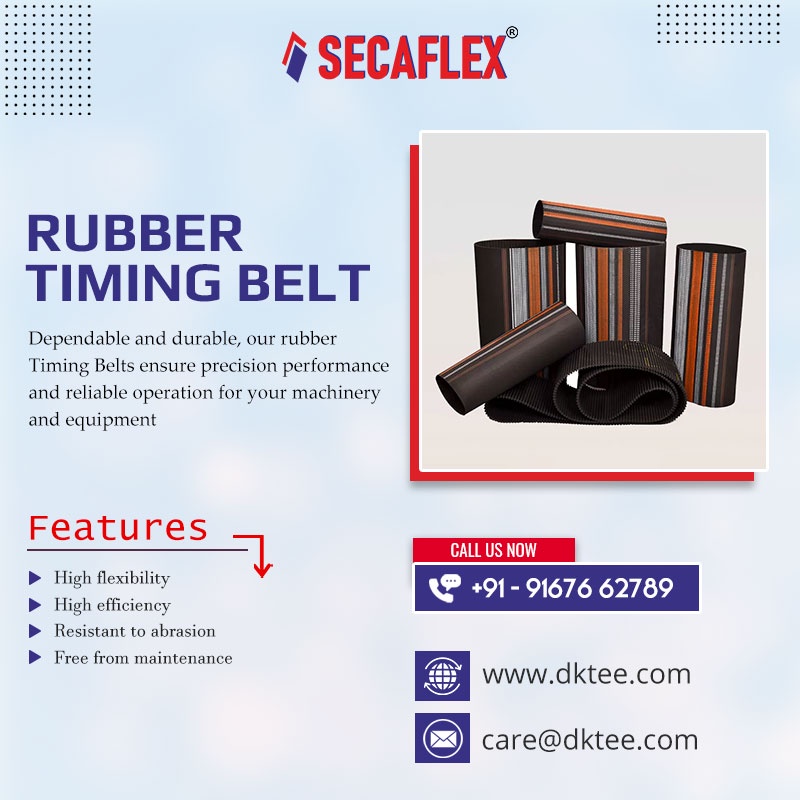Timing belts are crucial components in various mechanical systems, ensuring synchronized movement between the engine's crankshaft and camshaft. Among the variety of timing belts available in the market, two common types are polyurethane (PU) timing belts and rubber timing belts. While both serve the same fundamental purpose, understanding their differences can help in making informed decisions for specific applications.
Polyurethane Belts:
Polyurethane (PU) belts are constructed using a thermoplastic polymer that offers excellent mechanical properties such as high tensile strength, abrasion resistance, and flexibility. These belts are often reinforced with steel or fiberglass cords for added strength and stability.
Advantages of PU Belts:
Durability: Polyurethane belts are known for their durability and longevity, making them suitable for applications that require high performance and reliability over extended periods.
Low Maintenance: Due to their robust construction, PU belts typically require minimal maintenance, reducing downtime and maintenance costs in the long run.
High Precision: Polyurethane belts provide precise and accurate timing, ensuring smooth and synchronized operation in various mechanical systems.
Wide Temperature Range: PU belts can withstand a wide range of temperatures, making them suitable for use in both high and low-temperature environments.
Chemical Resistance: Polyurethane materials offer resistance to oils, greases, and chemicals, making Polyurethane (PU) belts suitable for applications where exposure to such substances is unavoidable.
Rubber Timing Belts:
Rubber timing belts are constructed using synthetic rubber materials such as neoprene or ethylene propylene diene monomer (EPDM). These belts are reinforced with various materials like fiberglass or polyester cords to enhance strength and flexibility.
Advantages of Rubber Timing Belts:
Cost-Effectiveness: These belts are generally more cost-effective compared to PU belts, making them a preferred choice for applications with budget constraints.
Noise Reduction: These rubber belts tend to operate quieter than Polyurethane belts, making them suitable for applications where noise levels need to be minimized.
Shock Absorption: Rubber materials offer excellent shock absorption properties, making these belts ideal for applications where vibration and impact resistance are essential.
Flexibility: Rubber timing belts are highly flexible, allowing for easier installation and accommodation of pulley misalignments.
High Load Capacity: They can withstand high loads and shock loads, making it suitable for heavy-duty applications in various industries.
Polyurethane vs Rubber Timing Belt
When selecting between rubber timing and PU belts, several factors need to be considered based on the specific requirements of the application:
Operating Conditions: Consider environmental conditions such as temperature, exposure to chemicals, and the presence of abrasives, as these factors can influence the performance and longevity of the timing belt.
Load Requirements: Evaluate the load capacity and shock resistance needed for the application to determine whether a PU or rubber timing belt would be more suitable.
Precision and Accuracy: For applications that require high precision and synchronization, Polyurethane belts may be preferred due to their dimensional stability and accuracy.
Budget Constraints: Consider the overall budget for the project, as rubber belts are typically more cost-effective than PU belts, especially for applications with large-scale installations.
Noise Levels: If noise reduction is a priority, these belts may be chosen over PU belts for their quieter operation.
Choosing Between PU and Rubber Timing Belts:
Both PU and rubber timing belts offer unique advantages and are suitable for various applications depending on specific requirements such as durability, precision, cost-effectiveness, and environmental conditions. By understanding the differences between these two types of belts, you can make informed decisions to ensure optimal performance and reliability in their mechanical systems.


No comments yet